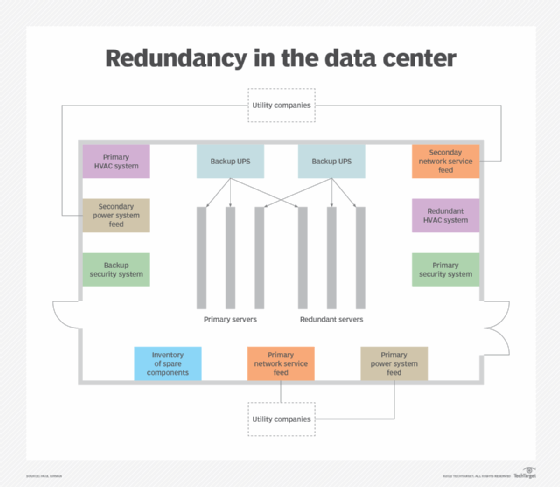If a Company Goes Bust Who Pays Redundancy? Lawful Insights for UK Personnel
If a Company Goes Bust Who Pays Redundancy? Lawful Insights for UK Personnel
Blog Article
Investigating the Interplay In Between Firm Redundancy and Organizational Adaptability for Future Development
In the dynamic landscape of today's business world, the complex partnership in between firm redundancy and business versatility emerges as a vital factor for sustained growth and success. Companies frequently face the challenge of striking a delicate balance between keeping a level of redundancy to alleviate risks and cultivating versatility to react quickly to the ever-evolving market needs.
Relevance of Firm Redundancy
Firm redundancy is an essential aspect that enhances organizational durability and minimizes functional risks. By including redundancy procedures within the organizational structure, business can much better hold up against unexpected disturbances and changes in business environment. Redundancy serves as a strategic barrier, permitting business to adjust and react successfully to unforeseen obstacles without jeopardizing important operations.
One key element of the value of company redundancy is its duty in ensuring continuity during times of crisis. When encountered with abrupt modifications or emergencies, redundant systems, sources, or workers can step in to maintain crucial features and avoid widespread disturbances. This continuity not just safeguards the firm's track record and customer trust fund yet likewise reduces financial losses and operational downtime.

Strategies for Business Flexibility

An additional important method is buying modern technology and infrastructure that can support flexibility and scalability. Implementing digital devices, automation, and data analytics can improve operations, improve effectiveness, and supply useful understandings for informed decision-making. In addition, developing versatile business frameworks that permit fast modifications to market dynamics and client needs is vital for remaining affordable in a rapidly evolving environment. By proactively identifying possible disturbances and possibilities, companies can proactively grow and adjust in an ever-changing service landscape.
Harmonizing Redundancy and Versatility
Accomplishing a harmonious balance between functional redundancy and business adaptability is paramount in browsing the complexities of a vibrant company setting. Redundancy within a business offers a safety and security internet, making certain continuity and stability in procedures. Nonetheless, an excess of redundancy can bring about ineffectiveness and hinder versatility to transforming market problems. On the various other hand, organizational flexibility enables companies to respond immediately to external interruptions and confiscate new possibilities. Striking the best equilibrium between redundancy and versatility is a fragile procedure that calls for a deep understanding of the organization's objectives, sector dynamics, and danger tolerance.
To achieve this balance, companies need to conduct regular assessments of their operations to identify areas where redundancy is essential for threat reduction and where flexibility can drive technology and development. Applying adaptable frameworks, promoting a culture of continuous knowing and improvement, and encouraging open interaction across all degrees of the company are vital approaches to balance redundancy and versatility successfully. By lining up these two vital aspects, firms can place themselves for sustainable development and success in an ever-changing service landscape.
Situation Studies on Adjustment Success
In analyzing circumstances of successful organizational adaptation, it ends up being obvious that the interaction in between functional redundancy and flexibility is read the article a specifying element in forming resilient companies. A DVD rental service, Netflix demonstrated amazing versatility by transitioning into a streaming platform when digitalization interrupted the market. These situation research studies highlight the importance of functional redundancy combined with organizational versatility in promoting long-lasting growth and competitiveness.
Building Resilience for Future Development
Structure strength for future growth requires a tactical alignment of functional procedures with market characteristics and emerging trends. Companies have to adjust to altering atmospheres by fostering a culture of flexibility, innovation, and continual enhancement. Durability involves not just recovering from problems but additionally proactively planning for future obstacles. One crucial aspect of building strength is purchasing durable danger management strategies to minimize prospective disruptions. This consists of situation planning, branching out supply chains, and developing backup prepare for various backups (who pays redundancy money).
Furthermore, fostering solid connections with stakeholders, such as customers, employees, vendors, and the community, is crucial for weathering uncertainties and keeping trust fund and support throughout rough times. Reliable communication and transparency play a crucial role in building durability, as they aid align assumptions and promote collaboration in navigating uncertainties.
Moreover, companies need to prioritize discovering and visit here growth initiatives to upskill employees and furnish them with the needed devices to adjust to changing scenarios. By purchasing their labor force, firms can enhance their versatility and agility, eventually reinforcing their resilience for sustainable future growth.
Final Thought

In the dynamic landscape of today's service globe, the elaborate partnership in between business redundancy and business adaptability emerges as a critical element for continual development and success. Business usually face the difficulty of striking a fragile equilibrium between preserving a degree of redundancy to mitigate dangers and promoting adaptability to respond quickly to the ever-evolving market needs.To accomplish this equilibrium, companies need to carry out routine analyses of their procedures to identify areas where redundancy is needed for threat reduction and where flexibility can drive innovation and growth.In conclusion, the here interplay in between company redundancy and organizational adaptability is important for future growth. Building durability with a mix of redundancy and versatility will certainly make sure that firms are prepared for the obstacles of the future.
Report this page